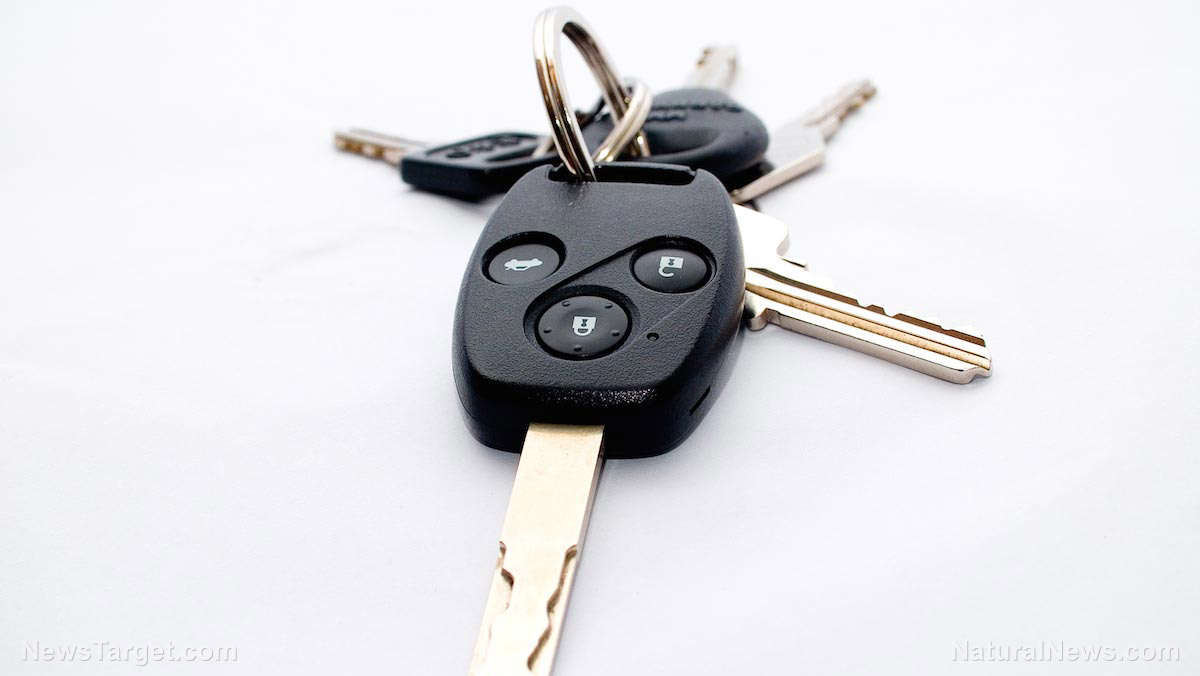4 Ways your car can be stolen WITHOUT keys and how to avoid them
09/22/2019 / By Edsel Cook

The days of the Terminator breaking the window of a car and physically hot-wiring it to pursue the Connors have long passed. Car thieves have several ways to unlock vehicles without needing to steal the keys or electronic fobs first.
The typical keyless entry system is simple. The key fob gives off a radio signal that travels over short distances.
If the car is within the range of the fob, it identifies the signal and unlocks the doors. Vehicles with start buttons use a similar method for the ignition. (Related: Prepping 101: What is situational awareness and why is it crucial for your personal safety?)
Capturing and jamming the signals of key fobs
Car thieves may take advantage of that process. In the signal relaying technique, they bring wireless transmitters to the owner’s house.
The transmitters pick up the signal from the key fob and pass it to the vehicle. Another car thief is waiting there – he catches the signal and uses it to unlock the car.
Thieves may also employ the signal jamming method. They use devices that emit the same frequency as remote key fobs.
The interference between the identical radio waves disrupts the signal from the fob. By preventing the command from reaching the car, the jammer keeps the vehicle from locking.
A signal jammer is small enough to fit inside the pocket of a car thief, allowing him to go around the car parking lot. It is also easy to hide in the driveway of the target.
Hacking the car’s computer costs only $13
Modern computer-run vehicles have a standard diagnostic port so that repair technicians have easy access to the on-board diagnostic device. It often appears in the vehicle’s front foot-well.
Unfortunately, computer hackers have come up with ways to access the vehicle’s computer through this port. Their devices plug in, boot up the software, and programs a blank key fob.
It takes just a few seconds for a hacker to modify the software of a car through the standard diagnostic port. The devices are available online and cost less than $13 (less than £10) per unit.
Finally, close-range testing isn’t so much a technique as an inadvertent outcome of an attempt to steal a car. If a person parks his vehicle directly outside his home or property, it may remain within reach of the key fob inside the house.
While this makes it easy for the thieves to bypass the keyless locking system, it also prevents them from driving off with the car. The engine will only ignite if the key fob is physically inside the vehicle.
The downside is that the electronic systems stay on standby and drain the battery of the vehicle. While car thieves won’t make a getaway in a car with a flat battery, neither will the owner.
How to protect keyless vehicles from car thieves
Always double-check the vehicle after pressing the lock button on the key fob. Look for overt signs like flashing indicator lights and folding side mirrors.
Block the signal of the key fob to prevent relay transmitters from hijacking it. Hide it inside a signal-blocking bag and take it out of range of the vehicle.
Use an old-fashioned physical lock on the steering wheel. It isn’t unbreakable, but it will slow down car thieves, increasing the chance that they get spotted and caught.
Install a GPS tracking device in the car. It will alert the owner to the theft and reveal its current location.
Make sure to update the security software of the car’s computer. Check the manufacturer’s website, download the latest updates into a USB storage device, and transfer the data to the vehicle.
Sources include:
Tagged Under: auto theft, badtech, car theft, computer hackers, computer hacking, crime, crime prevention, how-to, keyless cars, preparedness, prepping, security, security devices, security systems, transportation, wireless technology
RECENT NEWS & ARTICLES
SHTF.News is a fact-based public education website published by SHTF News Features, LLC.
All content copyright © 2018 by SHTF News Features, LLC.
Contact Us with Tips or Corrections
All trademarks, registered trademarks and servicemarks mentioned on this site are the property of their respective owners.


















